Leer en Español
The Atacama Desert
For those of you who haven’t figured it out the Atacama Desert is in the north of Chile. It is considered to be one of the driest deserts in the world. The most arid part of this desert is in the northern part of Chile, from the Copiapo River to the Loa River. These are located in the Antofagasta region and the Atacama region.
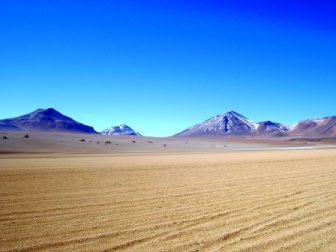
This desert is located in the same latitude belt as the rest of the deserts in the Southern Hemisphere deserts, on the Capricorn tropic, just like the Australian desert or the Kalahari Desert. It is formed in between two mountain ranges, one on the coast and the other formed by the Andes Mountains. Up north it meets up with the Sechura desert.
The high pressure system which is dominant in the area prevents the clouds to move towards this area and form storms. On the other hand the Humbolt current brings water from Antarctica along the ocean and cools the water which cools the air preventing again the formation of rain clouds. The Coast Mountains capture any condensed air that forms from the ocean humidity known as camanchaca (or garúa), this creates its own vegetation in this area. As for the Andes Mountains they capture any moist air that travels from the Amazon located on the north east of these.
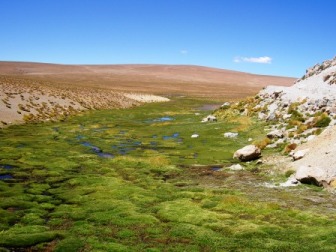
There have been periods of 400 years with no rain in the Atacama Desert. This area is affected by the Bolivian Winter which occurs during January and February, and combined with El Niño, cause brief but phenomenal downpours lightning storms along the Andes Mountains that will rush down the dry gorges.
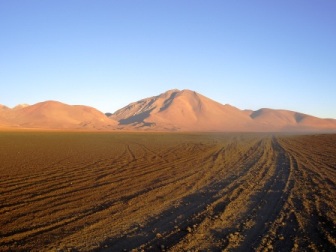
As for the temperature in the Atacama Desert, it doesn’t vary very much from summer to winter because it is in the Capricorn Tropic. In the summer, the minimum varies from 4-10°C and the maximum can get up to be 50°C in the sunlight. As for the winter, in some portions at night can get to be -25°C (the Ollagüe area) and in the day between 25 and 30°C in the shade. There are seasons of winds that can get to be as fast as 100 km/h usually at noon.
The Atacama Desert is rich in metallic minerals such as copper, silver, gold and iron and non metallic minerals such as lithium, boron, sodium nitrate and potassium salts. The salts extracted from the Atacama Salt Flats is used to pave the roads and are exported by companies up north.
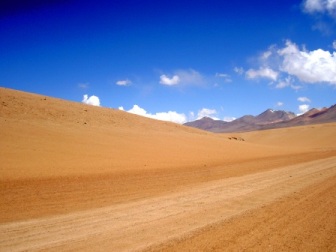
This region is great for doing four by four activities such as rallies. In fact there are championships held every year for this sport in the Atacama region, by Copiapo, where you can find great dunes. Near Iquique the land is ideal for landsailing and kitebuggying and if you ask around Iquique some agencies will take to do this sport.
The climate and landscape of the region creates wonderful things to see, sites that you may not be able to see anywhere else. So if you get the chance to be in the Atacama Desert area, and you can’t see them all at least try to do one; you won’t regret it! These are the highlights of this beautiful desert:
• Go to the
National Park of Lauca
to see the wildlife of the area including vicuñas, viscachas.
• Visit the National Monument of the Salar de Surire.
• Look at the fascinating National Reserve Pampa del Tamarugal along with the ancient painted geoglyphs.
• Gaze at the fascinating Salar del Huasco
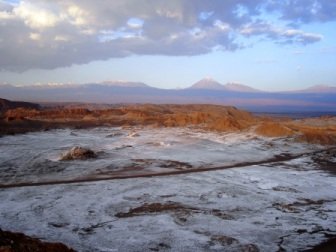
• See the fuming geysers of El Taitao.
• Watch one of the most spectacular sunsets at Valle de la Luna.
• Meet the flamingos at the National Reserve Los Flamingos.
• Go to the Salar de Aguas Calientes.
• Pass by the Salar de Atacama on the way to see the Astrologic Park of Atacama.
• See what a coastal desert would look like at the
National Park of Pan De Azucar
.
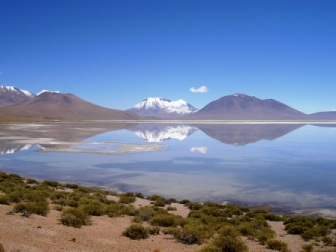
• Look at the beautiful lagoons created by this great desert such as the Laguna Verde or the
Laguna Del Negro Francisco
.
• Hike up to see Los Ojos del Salado.
• Smell the scent of the flowers in the flowering desert at the
Llanos de Challe National Park
.
• Visit the biggest observatories in Chile, La Silla and Las Campanas.
Return from Atacama Desert to Information on Chile Page
Return from Atacama Desert to Chile Tourism Home





